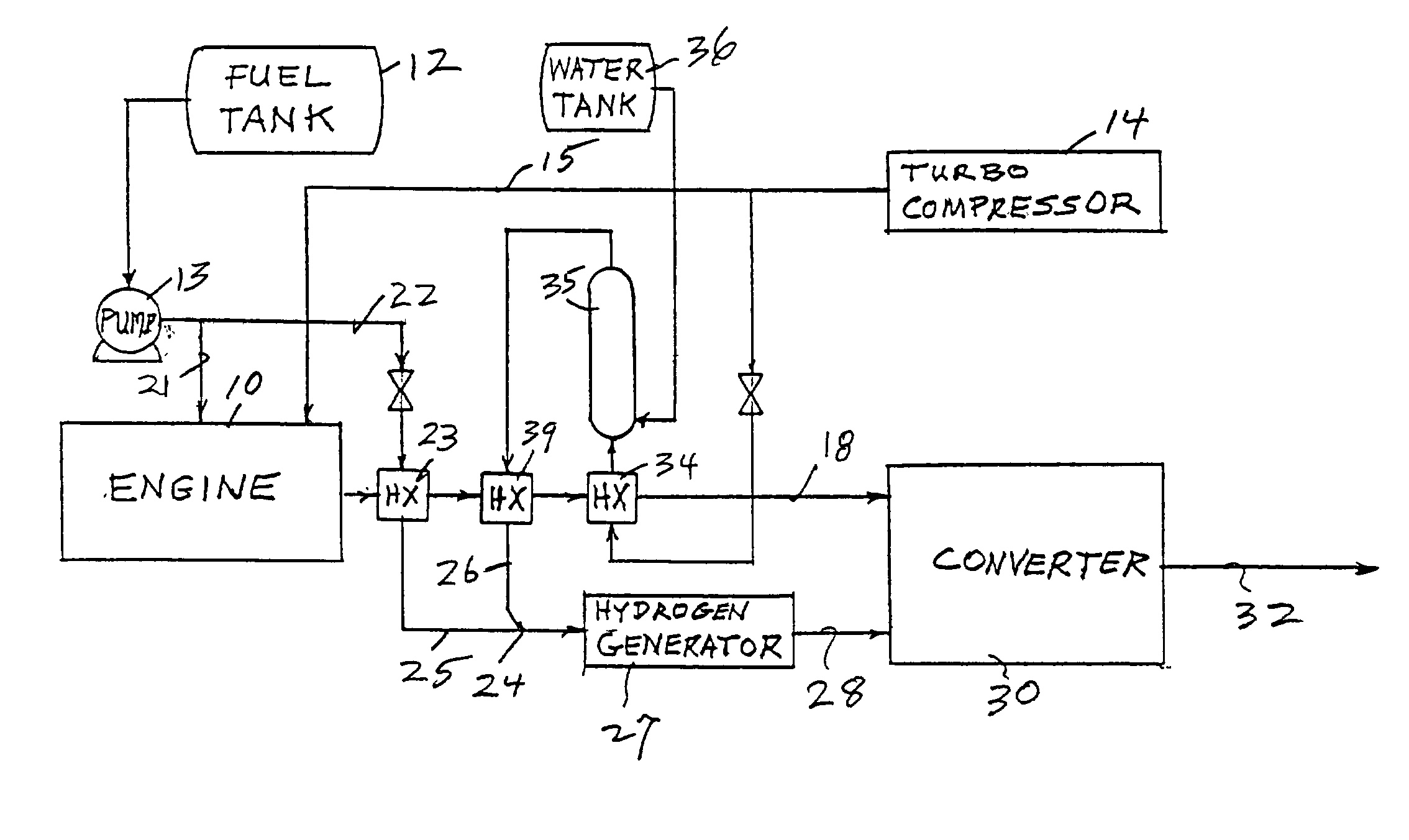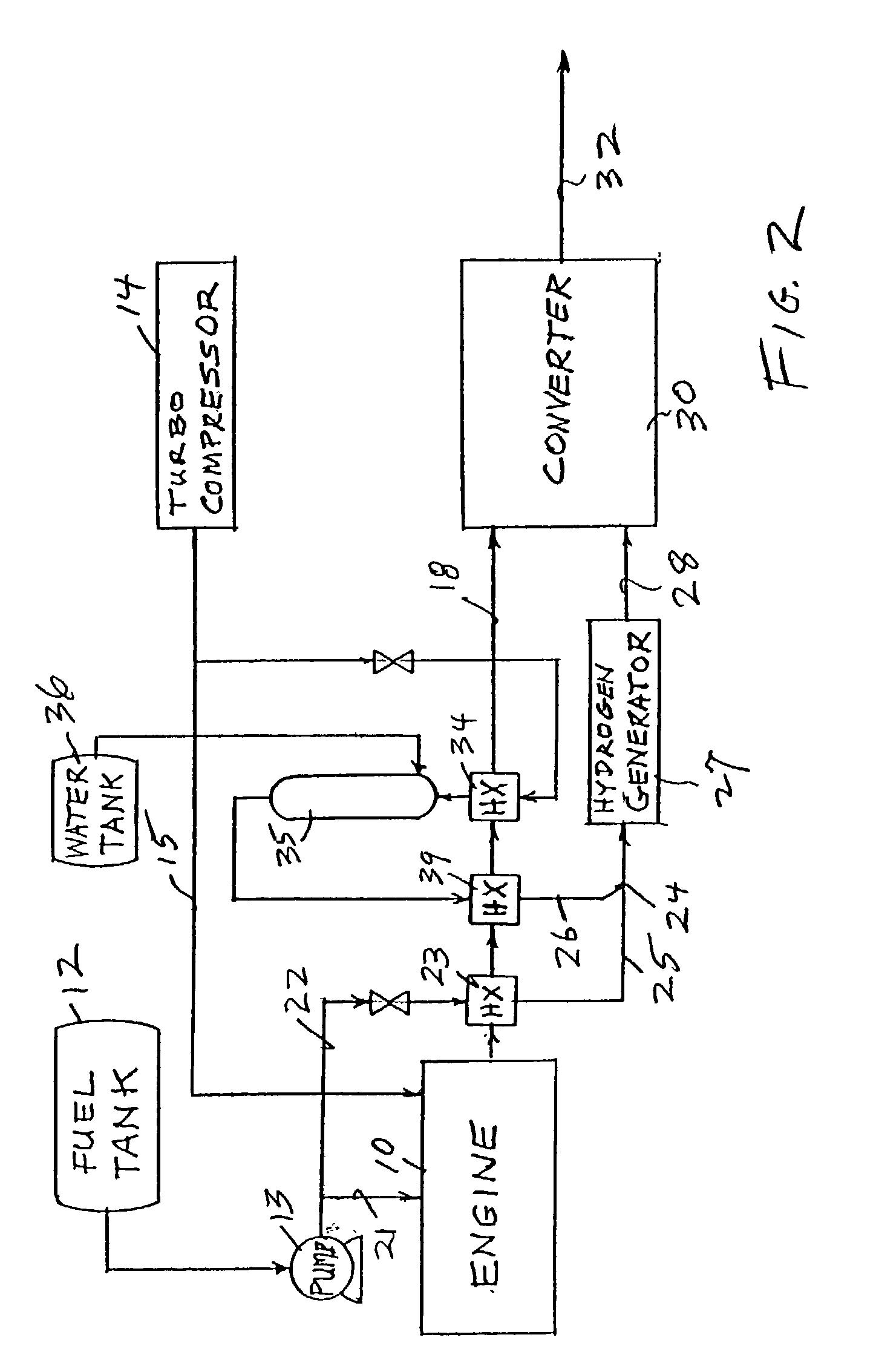Reducing oxides of nitrogen using reformate generated from engine fuel, water and/or air
a technology of engine fuel and reformate, which is applied in the direction of machines/engines, mechanical equipment, separation processes, etc., can solve the problems of complex and expensive nox reduction techniques, no catalyst formulations which are able to adequately provide urea, and no infrastructure in place to provide urea solutions, etc., to achieve simple, low-cost hydrogen generation, and improve the reduction of nox to nitrogen
- Summary
- Abstract
- Description
- Claims
- Application Information
AI Technical Summary
Benefits of technology
Problems solved by technology
Method used
Image
Examples
Embodiment Construction
[0014] In FIG. 2, the engine 10 has the conventional turbo compressor 14 feeding the air inlet line 15, a hydrocarbon fuel tank 12, and a fuel pump 13. The fuel may typically be diesel fuel, gasoline, natural gas, liquid petroleum gas, or propane. The fuel is fed by a line 21 to the engine for combustion with the air, and is fed by a second line 22 through a vaporizing heat exchanger 23 to a mixer 24 in a line 25 that feeds humidified air in a line 26 to a hydrogen generator 27. The hydrogen generator 27 may be a catalytic partial oxidizer (CPOx), a non-catalytic (homogeneous) partial oxidizer (POx), or an auto thermal reformer (ATR). Within the hydrogen generator, if it is a CPOx, foam monolith or other form of catalyst, which may comprise a group VIII metal, preferably nickel, cobalt, rhodium, iridium or platinum, convert fuel along with hydrocarbons, water and oxygen into a mix of hydrogen, CO and CO.sub.2. This is provided through a conduit 28 to an NOx reducing catalytic conver...
PUM
| Property | Measurement | Unit |
|---|---|---|
| heat | aaaaa | aaaaa |
| aqueous solution | aaaaa | aaaaa |
| time | aaaaa | aaaaa |
Abstract
Description
Claims
Application Information
 Login to View More
Login to View More - R&D
- Intellectual Property
- Life Sciences
- Materials
- Tech Scout
- Unparalleled Data Quality
- Higher Quality Content
- 60% Fewer Hallucinations
Browse by: Latest US Patents, China's latest patents, Technical Efficacy Thesaurus, Application Domain, Technology Topic, Popular Technical Reports.
© 2025 PatSnap. All rights reserved.Legal|Privacy policy|Modern Slavery Act Transparency Statement|Sitemap|About US| Contact US: help@patsnap.com



